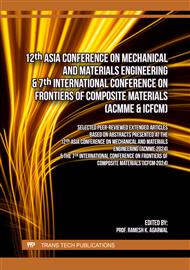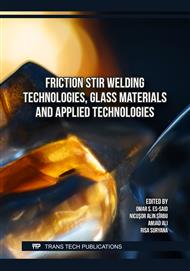p.3
p.9
p.17
p.25
p.37
p.45
p.53
p.67
Enhanced Electrochemical Performance of Aluminum-Air Batteries via Gallium Alloying
Abstract:
Aluminum-air batteries have gained significant attention due to their high theoretical energy density, cost-effectiveness, and environmental friendliness. However, challenges such as voltage drops and capacity losses from aluminum electrode corrosion necessitate innovative solutions. This study explores the use of neutral electrolytes and the alloying of aluminum with magnesium (Mg), tin (Sn), and gallium (Ga) to enhance battery performance. The electrochemical properties of Al-Mg-Sn-xGa alloys (x = 0, 0.1, 0.25, 0.45) were investigated. The addition of Ga reduced discharge potential and increased discharge capacity by dissolving the oxide film on the electrode surface. Potentiodynamic polarization tests and scanning electron microscopy confirmed the superior electrochemical properties of the Al-Mg-Sn-Ga (0.25 wt%) alloy. These findings suggest that a Ga content between 0.25 and 0.45 wt% is optimal for Al-Mg-Sn alloy-based aluminum-air batteries, providing insights for designing high-performance batteries.
Info:
Periodical:
Pages:
9-14
Citation:
Online since:
November 2024
Authors:
Price:
Сopyright:
© 2024 Trans Tech Publications Ltd. All Rights Reserved
Share:
Citation:



